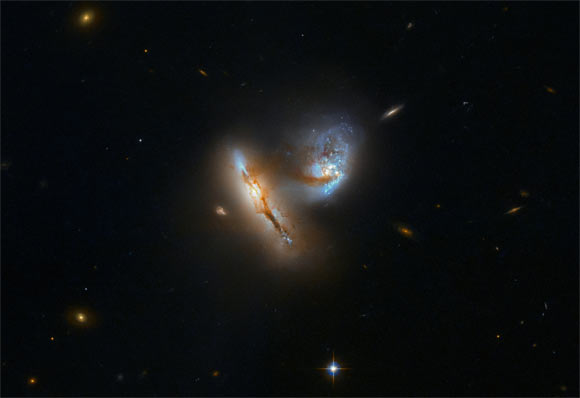Hubble Watches Graceful Dance of Interacting Galaxies: UGC 2369 | Astronomy – Sci-News.com
The NASA/ESA Hubble Space Telescope has captured a striking view of UGC 2369, a pair of interacting galaxies.

Two interacting galaxies UGC 2369N and UGC 2369S were imaged using Hubble’s Advanced Camera for Surveys (ACS). Two filters were used to sample various wavelengths. The color results from assigning different hues to each monochromatic image associated with an individual filter. Image credit: NASA / ESA / Hubble / A. Evans.
Also known as KPG 82 and Z 0251.2+1446, this galactic duo is located approximately 424 million light-years away from Earth in the constellation Aries.
The two galaxies, called UGC 2369N and UGC 2369S, are interacting, meaning that their mutual gravitational attraction is pulling them closer and closer together and distorting their shapes.
In the process, the two galaxies pulled material out into space across the diminishing divide between them.
The tenuous bridge of gas, dust, and stars can be seen connecting UGC 2369N and UGC 2369S.
“Interaction with others is a common event in the history of most galaxies,” the Hubble astronomers said.
“For larger galaxies like the Milky Way, the majority of these interactions involve significantly smaller so-called dwarf galaxies.”
“But every few eons, a more momentous event can occur,” they explained.
“For our home Galaxy, the next big event will take place in about four billion years, when it will collide with its bigger neighbor, the Andromeda Galaxy.”
“Over time, the two galaxies will likely merge into one — already nicknamed Milkomeda.”






